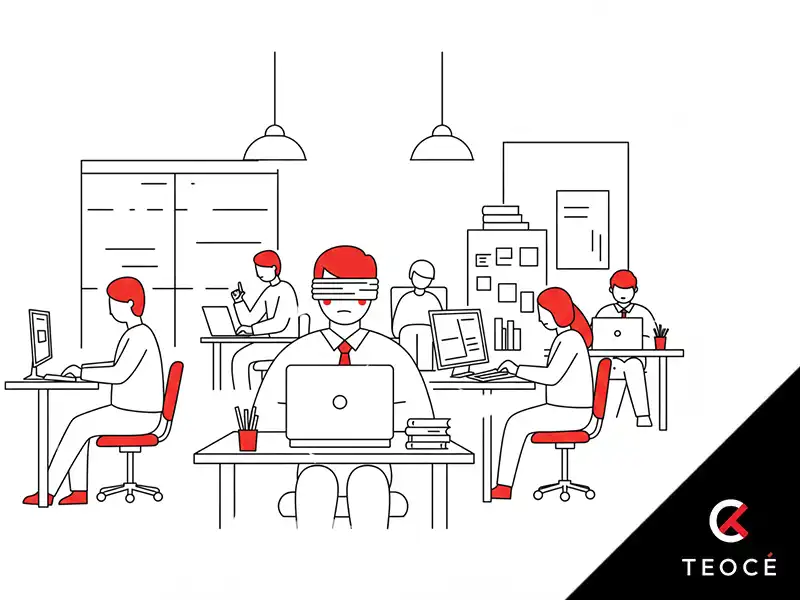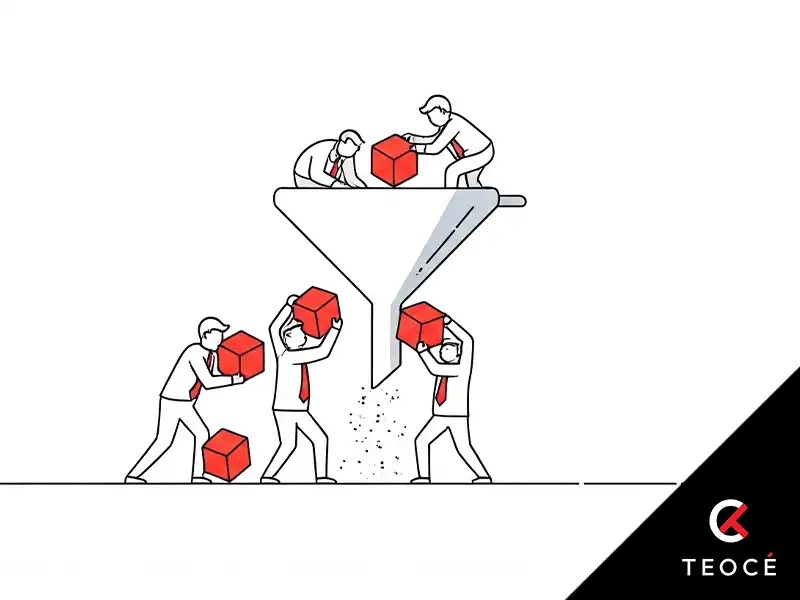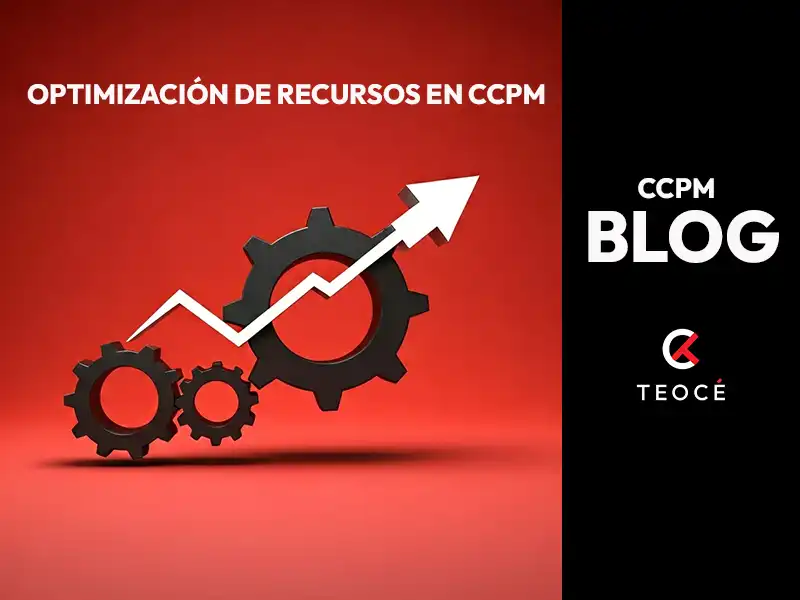According to the Standish Group's 2015 Chaos Report, only 29% of IT projects were completed. 29% of IT projects were completed.. In multi-project environments, where resources are shared across multiple open fronts, this underperformance is even more common.
The symptoms repeat themselves: constant saturation, delays, lack of visibility and unproductive multitasking. The cause is not in each individual project, but in the management of the entire system.
Critical Chain Management (CCPM) tackles this problem at the root: it optimizes the management of shared resources and prioritizes global flow over local efficiency, unlike traditional management. The result is not to "do more", but to finish more projects, sooner and with less stress.
Table of Contents
- What prevents real optimization in multi-project environments?
- Fundamentals for systemic resource optimization
- Practical application of ccpm to optimize resources
- Leadership and flow-oriented organizational culture
- Application cases and examples
- In short, synchronize to deliver more
- Do you want to improve the deliverability of your projects?
What prevents real optimization in multi-project environments?
In multi-project environments, global optimization is blocked by several systemic factors that reinforce each other:
- Constant multitasking. Constantly switching tasks not only reduces productivity, but adds stress, poor quality and unnecessarily long deadlines. Even if you plan with safety margins, that protection is diluted by procrastinating and dispersing focus. The human brain is not designed to efficiently manage multiple fronts simultaneously.
- Unfeasible commitments. Deadlines are negotiated more out of pressure than realism. Estimates include disguised buffers that get lost in the operational chaos. Schedules get old fast, and keeping them up to date is time-consuming without providing real control. The usual result: accumulated delays, especially at the end of the project.
- Poor visibility. Lack of reliable and current information

Multitasking, unfeasible trade-offs and lack of visibility block overall performance in multi-project systems.
Fundamentals for systemic resource optimization
The fundamentals of systemic resource optimization are centered on the Theory of Constraints (TOC), which identifies and manages the "weakest link" in the system, also known as the Pacing Resource or bottleneck .
Key: optimizing starts with managing the constraint.
Thinking about project flow, not local efficiency
Resource optimization in multi-project environments is not achieved by reducing costs or keeping everyone busy, but by increasing the flow of value. This shift in mindset-from local efficiency to systemic flow-iskey to improving overall performance.
The capacity of a resource should not be measured in isolation, but in terms of its contribution to the system. Trying to balance capacity and demand in each area often leads to unnecessary inventories, hidden bottlenecks and a drop in revenue.
The focus should be on effective utilization, not occupancy. Activating a resource without its work contributing to the flow of the system only consumes costs without generating value.
Key indicators to assess overall productivity:
- Throughput: Money generated by sales, discounting only the direct cost of materials. It is the best indicator of the real value produced.
- Inventory: All money tied up in unsold products. Includes materials, WIP (Work In Progress) and assets that do not yet generate revenue.
- Operating expenses: Everything that costs to transform inventory into revenue. Labor, maintenance, energy or software, even when there is no actual production.
The systemic objective is clear:
Increaserevenues, reduce inventory and control operating expenses at the same time. Improving only one of these three indicators, sacrificing the others, is not sustainable.
This approach, central to the Theory of Constraints and methodologies such as CCPM, allows resources to be managed not to be busy, but to contribute to the real objective: to complete projects that generate value.
Adapting to chaos with flexibility
Modern project management requires systemic optimization of resources and a high capacity to adapt to chaos. In multi-project environments, uncertainty is not an exception, but the norm. Pretending to eliminate it is futile; what is effective is to manage it.
Thinking in terms of local efficiency and rigid control leads to fragile systems, unable to respond to changes. The key is to identify and manage the overall constraints of the system, not to adjust each task or each piece of equipment separately.
Uncertainty as a constant
Projects don't fail for lack of planning, but for not knowing how to adapt. Scope changes, competing priorities, delayed resources: all of this is part of everyday life. Ignoring this reality or covering it with individual margins only adds to the complexity and lack of control.
The answer is not to armor against change, but to create systems that absorb it. That is where adaptive methodologies come in.
Adaptable systems such as CCPM, Kanban, Scrum
Critical Chain Project Management (CCPM)
CCPM starts from a realistic premise: resources are scarce and uncertainty is constant. Instead of fighting it, it integrates it into the system:
- The limiting resource (Pacing Resource) is identified and planned accordingly.
- Hidden margins in each task are eliminated and replaced by project buffers, which protect the overall flow.
- Multitasking is avoided and priority is given to fast and focused progress, as in a synchronized relay.
Scrum
Scrum allows adapting to changing requirements through short and functional deliverables. It is based on:
- Self-organized teams.
- Iterative and incremental rhythm.
- Focus on value delivered, not on tasks completed.
Its strength lies in constant collaboration, both within the team and with the customer.
Kanban
Kanban is not a complete methodology, but it is a powerful visual tool for:
- Visualize the workflow.
- Limit work in progress.
- Identify blockages and bottlenecks.
In addition, it is compatible with other methodologies such as CCPM, enhancing its adaptability and visual control.
These approaches build resilient systems, capable of staying the course in the midst of chaos and ensuring consistent deliveries even under changing conditions.
Detect and manage the bottleneck

To improve the performance of a multi-project system, it is not enough to adjust individual tasks. It is necessary to intervene where it has the greatest impact: on the resource that limits the overall flow. Detecting this bottleneck allows you to focus your efforts strategically.
The "Herbie" of the system
In every system there is a resource that is more saturated than the rest. That resource - the "Herbie" - is the one that sets the pace of progress. If it slows down, the whole system slows down. If it is released, everything flows better. That's why identifying the Herbie is the first step to real improvement.
Subordination and prioritization to the rate of the limiting resource
Once located, the Herbie must become the centerpiece of the planning. All decisions are subordinated to its rhythm: which tasks to execute, in what order and when. This subordination translates into focus, less multitasking and better utilization of critical resource.
CCPM applies this principle systematically, synchronizing projects to protect Herbie and ensure that it always has what it needs to move forward without interruption.
Value stream, not local efficiency, is the real measure of productivity in multi-project environments.
Practical application of ccpm to optimize resources
The practical application of CCPM (Critical Chain Project Management) is based on the Theory of Constraintsfocusing planning and execution around the most constrained resource in the system. CCPM recognizes uncertainty as a constant and manages it proactively, maximizing the flow of completed projects with less effort and less stress.
Constraint-focused planning
- The Critical Chain is defined as the longest sequence of tasks that includes resource constraints, not just technical constraints.
- Tasks are estimated using focused durations: probable working times, without inflated margins.
- The Project Buffer is added at the end of the project.
This allows planning with less hidden margin and more real protection.
In multi-project environments:
- The "Pacing Resource" is identified and projects are synchronized at its pace.
- Prioritization is based on criticality and delivery commitment.
Visual control and operational focus
- The Buffer Fever Chart graphically displays the progress of the project in relation to its buffer consumption, allowing to detect risks before they materialize.
- The weekly meetings serve to update remaining durations and make decisions based on the actual status of the buffer.
- The prioritized lists replace detailed schedules, guiding each resource on what task to perform next.
- Multitasking is eliminated to ensure total focus: one task, one deliverable, one tangible breakthrough.
CCPM plans and executes around the critical resource, using buffers and operational focus to maximize project completion.
Leadership and flow-oriented organizational culture

Leadership and flow-oriented organizational culture are pillars for systemic optimization of resources. The implementation of methodologies such as CCPM requires more than tools: it implies a profound cultural change, which must be supported by management.
Management support and role of the project manager
Management support is key to integrating the new system into daily operations. It is not enough to authorize the change; it is necessary to actively promote it, removing barriers, resolving priority conflicts and aligning indicators.
The project manager and his team must understand how to organize the work, which tasks to prioritize and how to report progress. CCPM offers prioritized task lists that make it easier to focus on what is most important and help eliminate multitasking, improving both efficiency and team well-being.
Face-to-face communication and customer collaboration
Direct communication within the team and with stakeholders is essential to accelerate decisions and reduce misunderstandings. Collaboration with the client, rather than contractual negotiation, reinforces alignment of expectations and allows for adapting deliverables to new needs.
Agile methodologies such as Scrum integrate the customer into the team, prioritizing early and continuous delivery of value.
Combine methodologies according to context
There is no single recipe. It is useful to combine methodologies according to the environment:
- Scrum provides a collaborative culture ideal for contexts with high uncertainty.
- CCPM provides planning and control tools for multi-project environments with shared resources.
The key is to use each approach where it provides the most value. In complex scenarios, synchronizing projects around the most saturated resource - the Pacing Resource -maximizes the overall flow, which is the true goal of the system.
Without management support and a cultural shift towards flow, CCPM cannot unleash its full transformational potential.
Application cases and examples
The application of CCPM is illustrated with real-life mini-cases and their transformative results. This methodology has demonstrated consistent success, enabling organizations to accelerate delivery, reduce costs and increase capacity to execute without adding pressure to the team.
In the report "Critical Success Factors in Critical Chain Project Management" by Wendell P. Simpson III and William Lynch of ProChain Solutions, Inc., several real success stories of CCPM implementation are detailed.
Real application examples
- A large telecommunications company used CCPM to drastically reduce product development times, increasing on-time delivery to over 90%.
- Habitat for Humanity broke its own world record by building a house in just 3 hours and 45 minutes, applying relay-type synchronization principles, and with half the staff resources of its previous record.
- A company in the medical sector accelerated the development of a machine to diagnose respiratory infections thanks to a focus on flow and buffers.
Bottleneck detection and flow control
CCPM is based on identifying the "Herbie" of the system, i.e. the most saturated resource that determines the speed of the whole. By subordinating all tasks to their pace, multitasking is avoided, flow is stabilized and value delivery is accelerated.
This approach is complemented by protective buffers, which absorb uncertainty and protect the entire project. Execution becomes a relay race, not an uncoordinated marathon.
Results of CCPM application
It is valued that implementing CCPM generates measurable results in these areas, data that has emerged from my experience as a consultant and that I justify in my book "The Great Challenge: Managing Projects in Startup Environments".
- -25% in Lead-Time (delivery time)
- +20% in project capacity without additional resources
- -70% in non-quality costs, thanks to less urgency and better collaboration
- A multi-project system based on CCPM has outperformed commercial programs, managing more projects, with less stress, and generating greater value and return (NPV).
The application of CCPM demonstrates measurable results: more projects completed, in less time and with less pressure.
In short, synchronize to deliver more

To synchronize to deliver more, it is key to understand that productivity does not equate to being busy. The real goal of an organization is not to have everyone working non-stop, but to move towards its objective: to generate value and deliver completed projects.
Keeping everyone busy may seem efficient, but in reality it creates excess inventory, saturation and unnecessary costs without improving revenue.
The orchestra and the rhythm resource
The orchestra metaphor helps to visualize this principle: in every system there is an instrument that sets the tempo. In project management, this role is played by the most loaded resource - the "Herbie" or Pacing Resource.If this resource is blocked or dispersed in secondary tasks, the whole system slows down.
Synchronizing means subordinating the rest of the system to that key resource, ensuring that you always have what you need, without interruptions or multitasking.
Deliver more, with less friction
Methodologies like CCPM are designed to achieve that synchronization. They eliminate multitasking, prioritize focus and transform execution into a relay race, where each step is completed with speed and clarity.
The result: more projects delivered, in less time, with less pressure and more control.
The goal is not to keep all resources busy, but to synchronize the system to generate real and sustainable value.
Do you want to improve the deliverability of your projects?
Apply CCPM with the support of TEOCÉ. We guide you to:
- Detect bottlenecks and synchronize resources.
- Redesign your planning with effective buffers.
- Execute with focus, visual control and without adding urgency.
